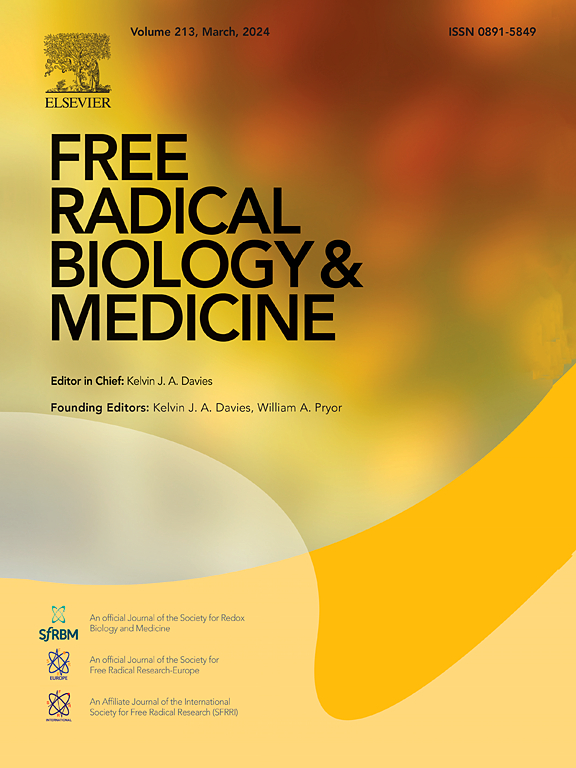Targeting mitophagy using isoliensinine as a therapeutic strategy for renal cell carcinoma treatment
IF 7.1
2区 生物学
Q1 BIOCHEMISTRY & MOLECULAR BIOLOGY
引用次数: 0
Abstract
Renal cell carcinoma (RCC) is a formidable and lethal form of kidney cancer, necessitating the exploration of novel therapeutic options. Isoliensinine, an alkaloid derived from lotus seed embryos, has shown promising anti-cancer properties. However, its mechanistic actions and impact on mitochondrial dynamics remain poorly understood. This research has aimed to investigate the effects of isoliensinine on RCC, as well as its potential involvement in mitophagy and mitochondrial function. In vitro experiments utilizing RCC cell lines (786-O and ACHN) have demonstrated that isoliensinine treatment significantly reduced cell viability. Moreover, isoliensinine induced an increase in cellular and mitochondrial reactive oxygen species (ROS) levels, accompanied by reduced mitochondria membrane potential, indicating an influence on mitochondrial function. Furthermore, MitoTracker staining revealed distinct mitochondrial morphologies, with isoliensinine promoting mitochondrial fission, thus supporting its role in mitochondrial dynamics. Notably, isoliensinine led to a time-dependent upregulation of mitophagy-related proteins, indicative of mitophagy activation. Of particular interest, the addition of MitoTEMPO, a potent mitochondrial ROS scavenger, effectively reversed the isoliensinine-induced upregulation of mitophagy-related protein expression and mitochondrial ROS levels. These combined results provide novel insight into the impact of isoliensinine-induced mitophagy on mitochondrial dynamics in renal carcinoma cells. Overall, the findings from this study highlight isoliensinine as a promising candidate with significant potential for further investigation and eventual clinical application in RCC therapy. Moreover, the modulation of mitochondrial dynamics, mitophagy and ROS levels through the use of isoliensinine further adds to its appeal as a potential therapeutic agent.

求助全文
约1分钟内获得全文
求助全文
来源期刊

Free Radical Biology and Medicine
医学-内分泌学与代谢
CiteScore
14.00
自引率
4.10%
发文量
850
审稿时长
22 days
期刊介绍:
Free Radical Biology and Medicine is a leading journal in the field of redox biology, which is the study of the role of reactive oxygen species (ROS) and other oxidizing agents in biological systems. The journal serves as a premier forum for publishing innovative and groundbreaking research that explores the redox biology of health and disease, covering a wide range of topics and disciplines. Free Radical Biology and Medicine also commissions Special Issues that highlight recent advances in both basic and clinical research, with a particular emphasis on the mechanisms underlying altered metabolism and redox signaling. These Special Issues aim to provide a focused platform for the latest research in the field, fostering collaboration and knowledge exchange among researchers and clinicians.
 求助内容:
求助内容: 应助结果提醒方式:
应助结果提醒方式:


